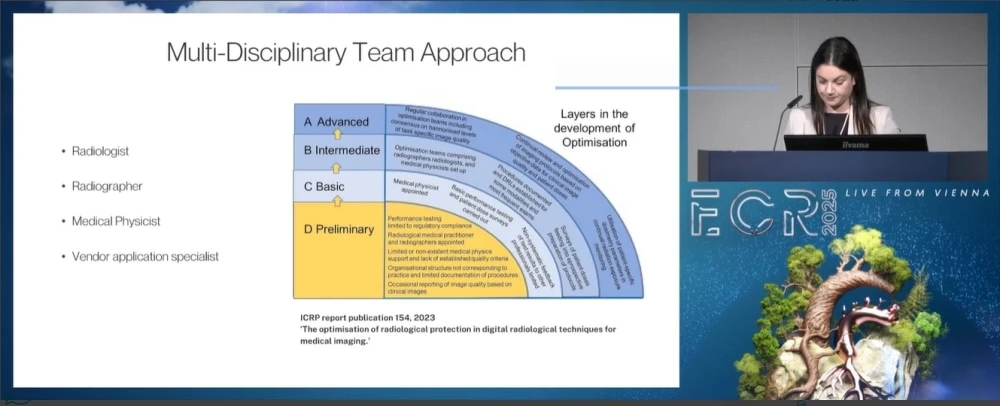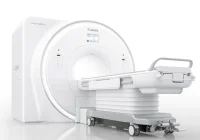The European Congress of Radiology session on interventional radiology brought together leading experts to explore key developments in the field. The discussions spanned emerging techniques in oncology, the evolving responsibilities of radiographers and the critical importance of safety and radioprotection during interventional procedures. Attendees gained valuable insights into how interventional radiology is transforming patient care and the role of multidisciplinary collaboration in ensuring optimal outcomes.
Emerging Techniques in Interventional Radiology
Giovanni Mauri, an interventional radiologist from Milan, discussed the growing field of interventional radiology, particularly in oncology. He highlighted the "disruptive innovation" that interventional radiology represents, especially in cancer treatments like ablation, which has become the first choice in certain cases, like hepatocellular carcinoma (HCC). Mauri emphasised the crucial role of radiographers in the success of these procedures, stating, "Radiographers should be actively present in all the phases of the treatment," from planning to follow-up. He also urged radiographers to be proactive in integrating new technologies, like augmented reality and virtual navigation, into their practices.
Advancing Practice for Radiographers in Interventional Radiology
Helen Louise Bucknall, an advanced practice radiographer from a busy London teaching hospital, discussed the scope and benefits of advanced practice in radiography. She outlined how the College of Radiographers' Education and Career Framework helps define career progression at different levels, with a focus on clinical practice in interventional radiology (IR). She highlighted various procedures radiographers can now perform, from fluoroscopy-guided to ultrasound-guided procedures and emphasised the expanding role in non-procedural areas such as patient assessments, consent and clinical trials.
Bucknall shared her personal experience, noting, "I perform all central venous access procedures… I do all ultrasound-guided biopsies and drains," showcasing the wide range of responsibilities radiographers can take on. She also stressed the positive impact on patient care, efficiency and the reduction of waiting times. As she concluded, she underscored the importance of communication with radiologists and management to successfully pursue advanced practice roles in the field.
Enhancing Safety and Radioprotection in the Interventional Setting
Lara Marie Deguara's session focused on radiation safety in interventional radiology. She discussed the regulatory frameworks governing ionising radiation, such as the ICRP, IAEA and national bodies like Malta's Radiation Protection Commission. Deguara emphasised the importance of a multidisciplinary approach involving radiologists, radiographers, medical physicists and vendor application specialists.
She highlighted practical radiation safety measures such as minimising X-ray exposure through techniques like tight collimation, pulse fluoroscopy and the strategic use of protective barriers. "We should always make minimal use of magnification modes and also adopt pulse frame rates," she advised. Additionally, she addressed the significance of personal protective equipment like lead aprons and thyroid collars and the use of real-time dosimeters for monitoring radiation exposure.
The session underscored the need for ongoing training in radiation protection for all staff involved in interventional procedures, especially those without radiation backgrounds.
The session provided a comprehensive overview of the rapid advancements in interventional radiology, particularly within oncology treatments such as ablation, which is becoming a primary choice for conditions like hepatocellular carcinoma. It also highlighted the expanding scope of radiographers' roles, from performing complex procedures to contributing to patient assessments and clinical trials. Additionally, the session underscored the necessity of stringent safety measures, including radiation protection protocols and continuous training, to ensure that all team members are equipped to handle new technologies and maintain a safe environment during interventional procedures.
Source & Image Credit: ECR 2025










